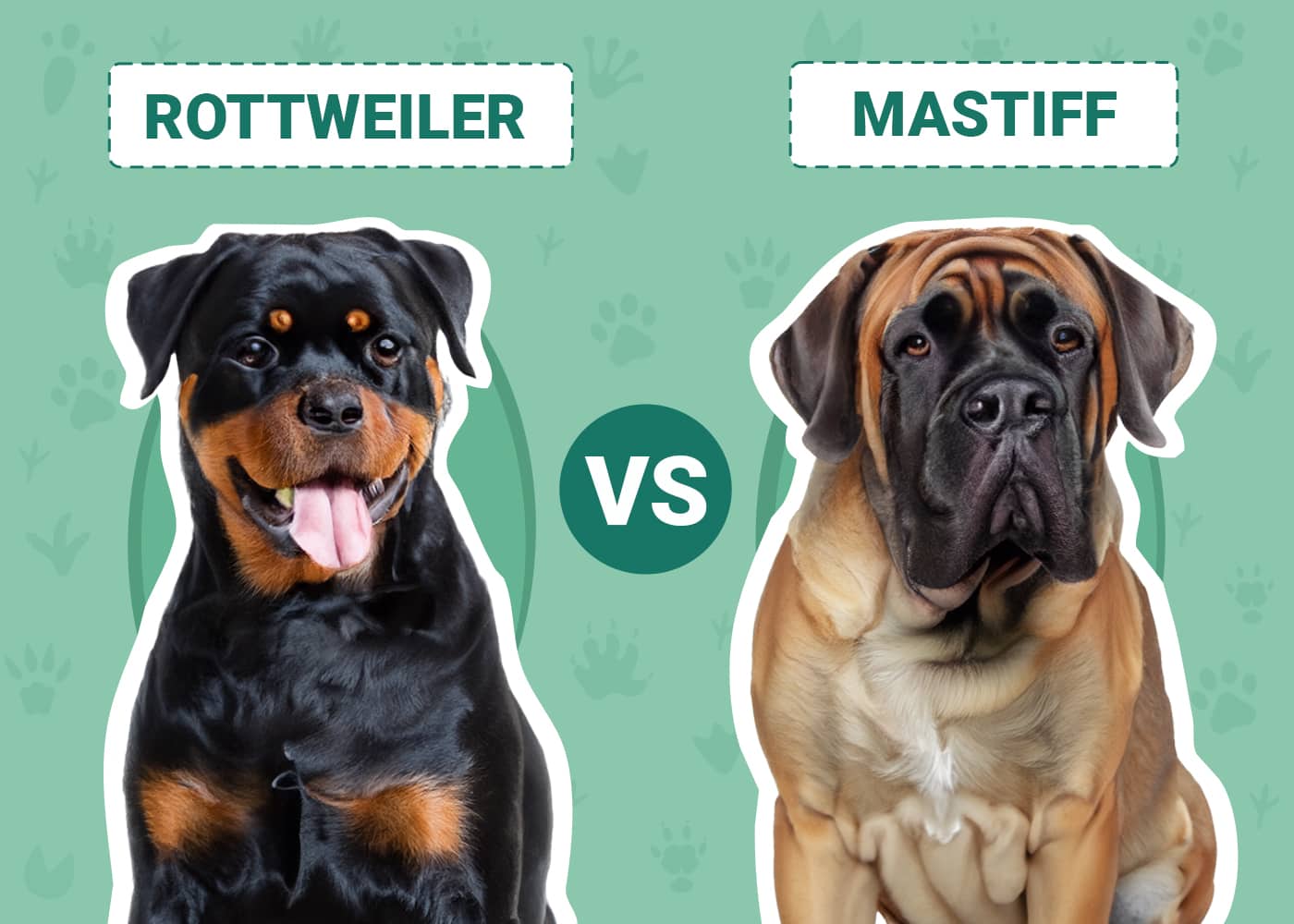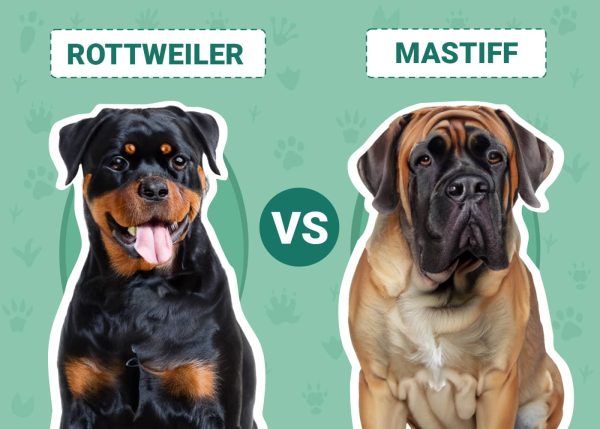Click to Skip Ahead
The Rottweiler and Mastiff look very different at first glance, but these breeds are distant relatives with an ancient Roman background. Rottweilers and Mastiffs are large breeds and, historically, have served and protected in many ways. But don’t be fooled by their appearance; these dogs are big softies at heart.
Rottweilers and Mastiffs are excellent family dogs. The question is, what kind of family do these dogs belong to, and what makes them so different?
Visual Differences
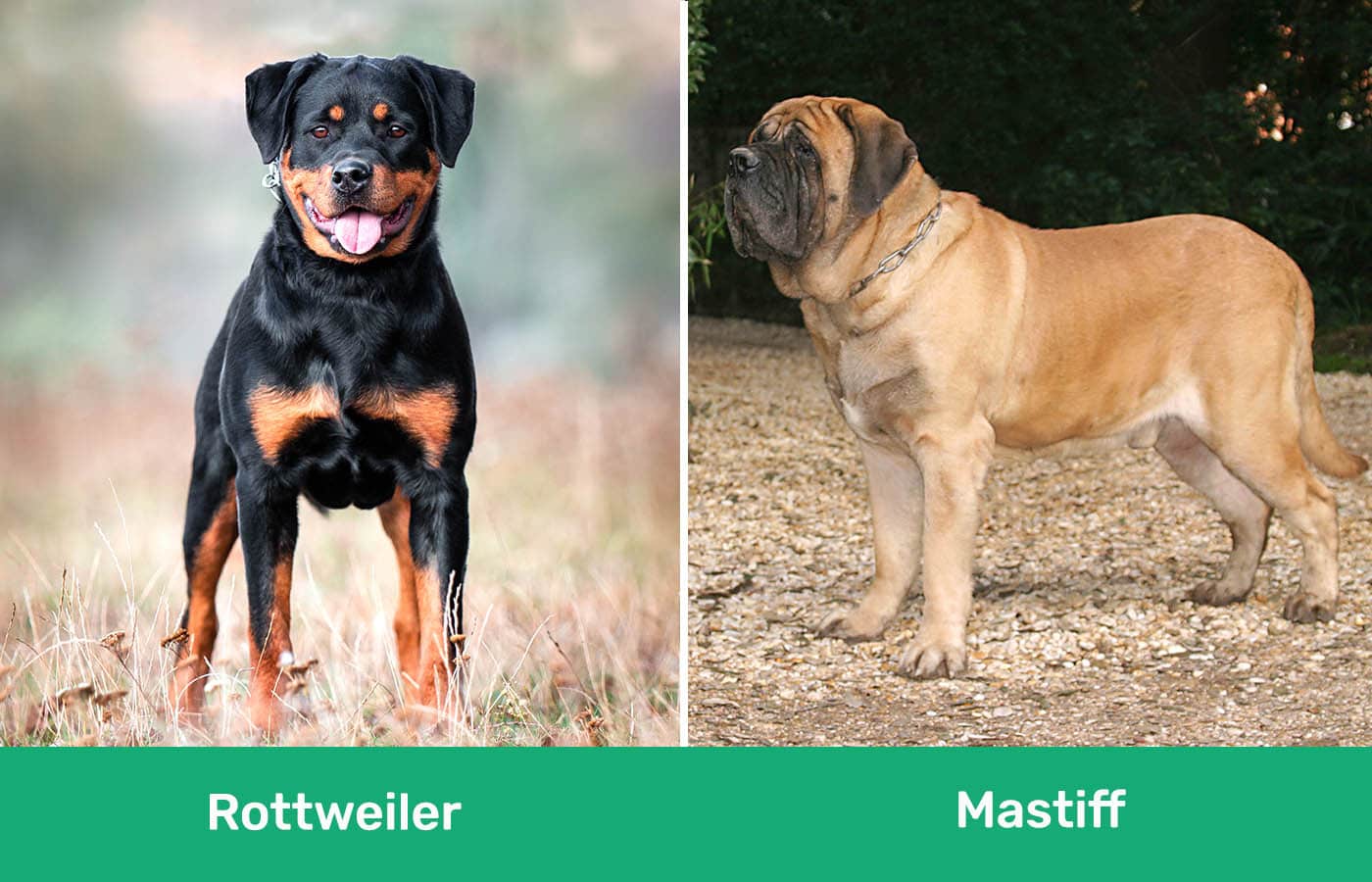
At a Glance
- Average height (adult): 22-–27 inches
- Average weight (adult): 80–135 pounds
- Lifespan: 9–10 years
- Exercise: 1 hour or more
- Grooming needs:
- Family-friendly: Yes
- Other pet-friendly: Sometimes
- Trainability: Easy
- Average height (adult): 27–30 inches
- Average weight (adult): 125–230 pounds
- Lifespan: 6–10 years
- Exercise: 20–30 minutes
- Grooming needs: Moderate
- Family-friendly: Yes
- Other pet-friendly: Sometimes
- Trainability: Moderate

Rottweiler Overview
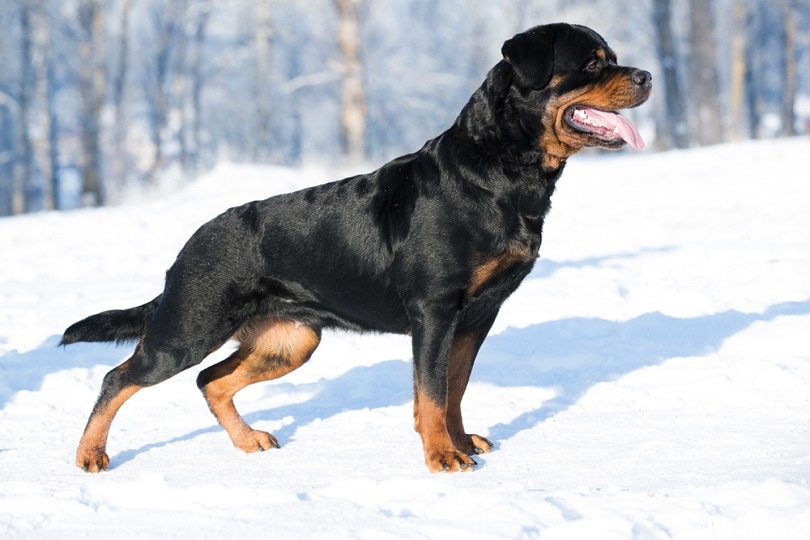
Rottweilers have strong protective instincts and are very territorial. With a glistening black coat, Rottweilers stand tall and proud—almost as tall as a Mastiff.
Unlike Mastiffs, Rottweilers strut around with confidence and courage, but not too much if trained well. They have a lot more energy to exert, too, so these dogs need a job or activity.
The Butcher’s Dog of Rottweiler
Although not as large, Rottweilers are close relatives to Mastiffs. The Roman Empire bred many dog breeds for various reasons, and the Rottweiler was one of them.
But Rottweilers didn’t earn their infamous German name until after the Roman Empire collapsed and they were left behind. With no more Roman masters, Rottweilers earned their place as cattle dogs in German cattle towns, helping move the herds from pasture to market.
Rottweilers protected the cattle from thieves and predators, eventually earning them the name Rottweiler Metzgerhund, meaning Butcher’s Dog of Rottweil.
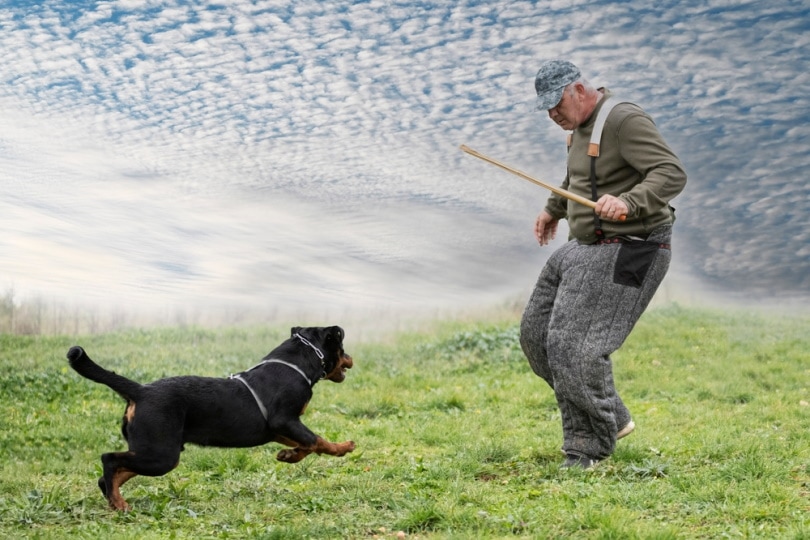
Exercise
Rottweilers love to be active and can excel in almost any sport or task, especially if companionship is involved. Two vigorous 20-minute runs daily are best, ideally with an owner or dog walker.
Training
Rottweilers crave human companionship and excel at training when there is a strong bond with an owner already present. These dogs are eager to please and will do very well in training for a chance to show off to their owners.
Rottweilers are headstrong, so a little stubbornness is expected. Puppy classes and continued training can help shape your Rottweiler to be the great leader he can be.
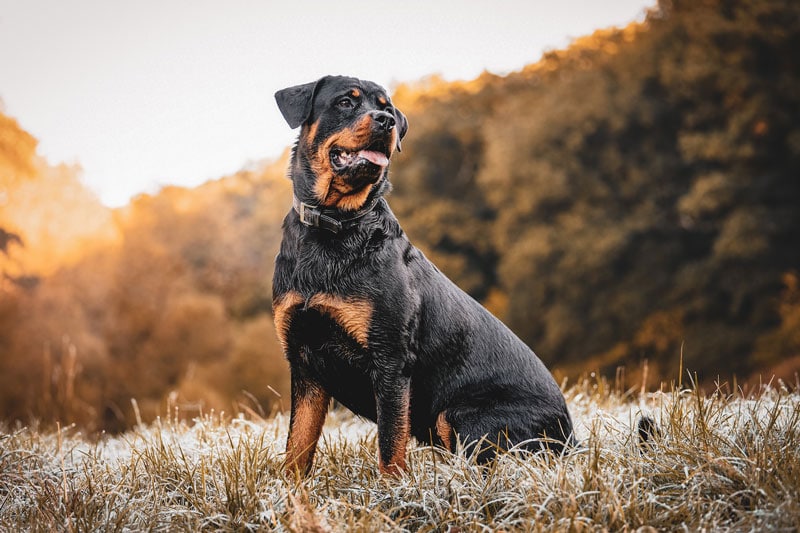
Grooming
Rottweilers require weekly brushing and regular bathing. They shed moderately throughout the year and will shed profusely twice a year. Keep the nails trimmed and teeth brushed as needed.
Suitable For:
A well-trained Rottweiler is a great addition to any family that can be regularly present. Rottweilers do well with other animals and children and can adapt easily to sudden changes. They are more physically active, so they do best with owners who are equally active.
Mastiff Overview
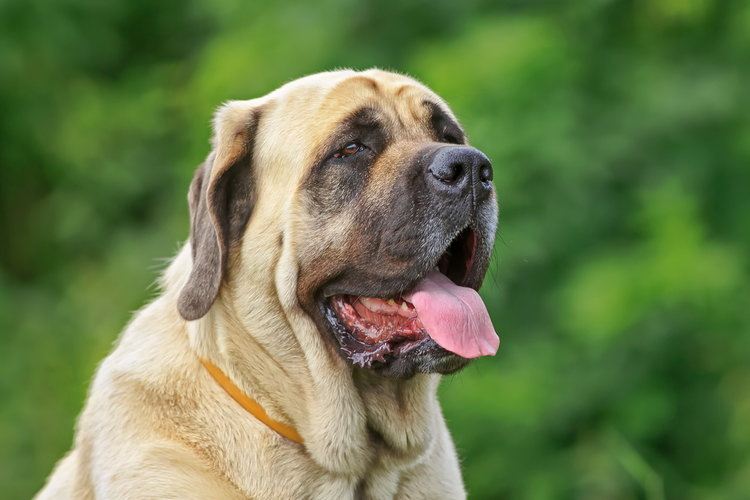
No matter your size, a Mastiff will make you feel a little smaller upon entering the room. These giants measure around 30 inches tall and well over 120 pounds at a minimum. But their size isn’t what makes people fall in love with Mastiffs—it’s their keen sense of protective instincts and undying loyalty tied together by an unmatched tenderness.
Mastiffs are like the grandpa of dogs. They have a lifetime’s worth of strength and knowledge, yet the patience to undergo a small child’s pranks. They’ve perfected balancing temper, courage, and generosity to create a true gentle giant.
The Ancient British Giant
For centuries, the Mastiff thrived on the British Isles until 55 BC when Julias Caesar invaded Britain. Caesar was impressed by the Mastiff’s ability to fight against his army and decided to bring a few dogs back with him for blood sport.
The breed remained on the East side of the world until after WWII when they faced extinction. US breeders had Mastiffs exported to North America so they could help rebuild the breed. Now, the Mastiff is number 37 out of 287 breeds in America.
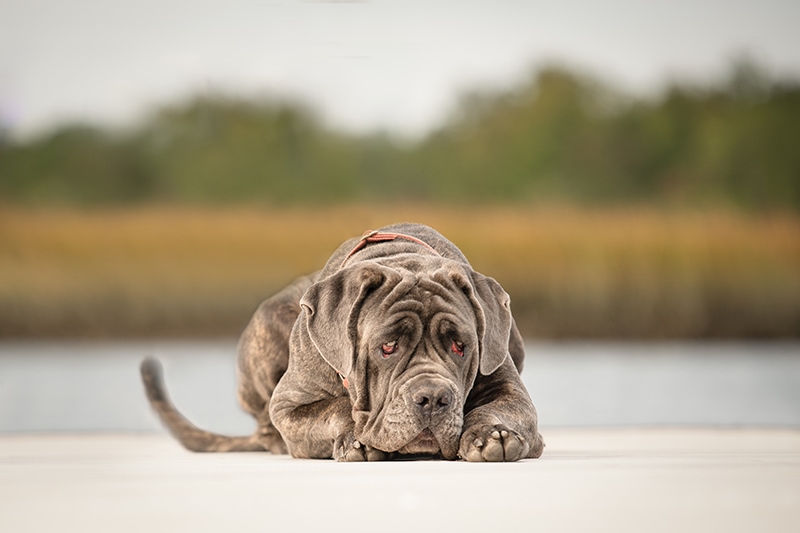
Exercise
Unlike other large breeds, Mastiffs have low exercise requirements. A simple walk and some free play will do the trick.
As a rule, keep exercise sessions short—no more than 2 miles per walk. Mastiffs are notorious for plopping down in the middle of a walk when they’ve decided they need to rest. If you reach this point, expect to stay there for a while.
Training
Mastiffs are highly intelligent, eager to please, and house-train easily. Generally, these dogs are easy to train. However, they can be quite stubborn and are extremely powerful in size. Mastiffs also get their feelings hurt easily.
Short, upbeat training sessions are best to maintain the full attention of your Mastiff and keep you from pushing yourself too hard in training and potentially raising your voice. If your Mastiff decides to lie down in the middle of training, try making eye contact with them. Mastiffs are masters at reading facial expressions.
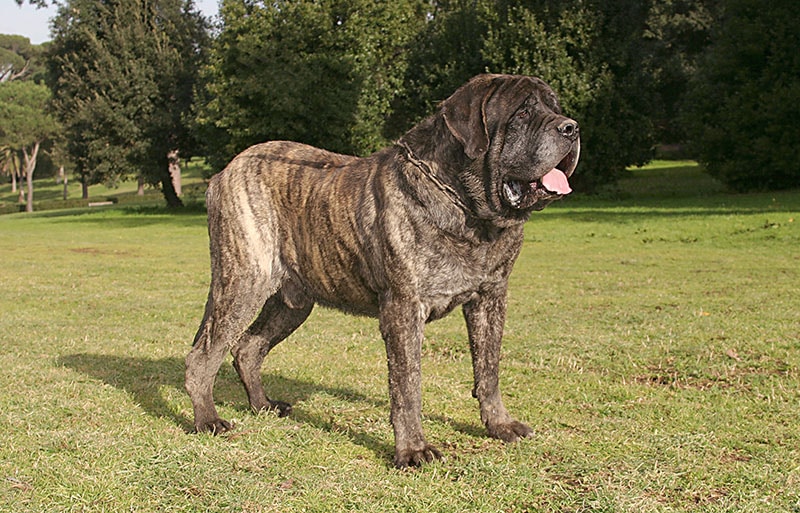
Grooming
Mastiffs require no special grooming treatments. A simple brush once per week and a bath as needed get the job done. Remember to keep the nails trimmed and the teeth brushed.
Suitable For:
With a Mastiff, where you live doesn’t matter. Mastiffs are clean, quiet indoor dogs who do very well in families with small children. Mastiffs require companionship at all times, so they do best with families who are home more often than not. Because of their size and power, Mastiffs need homes with experienced dog owners.

Which Breed Is Right for You?
If you’re unsure of which breed is right for you, consider these facts.
Mastiffs are gentle giants that do very well with small children and (usually) other pets. They don’t require much grooming and exercise, but because of their size and power, they do best with experienced dog owners.
On the other hand, Rottweilers are a bit more active and like to be the leaders of the pack. These dogs need vigorous exercise daily and are very territorial. That said, a well-trained Rottweiler will do just fine around small children and animals. They don’t require any special grooming procedures but need a brush and bath more often than Mastiffs.
Ultimately, Rottweilers are best for active families, and Mastiffs are best for more laid-back families. Which one works best for you?
Featured Image Credit: (T) Serova_Ekaterina, Shutterstock | (B) Michelle Cavanagh, Shutterstock

